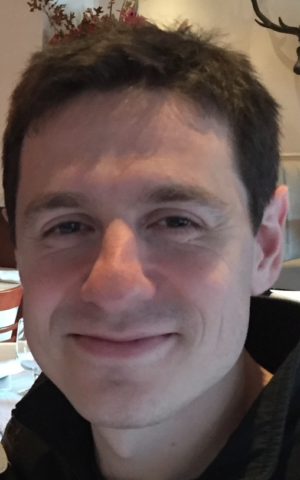
A 40-year-old software engineer by the name of Daniel Patt whose also an employee at Google, has created software that uses Artificial Intelligence (AI) and is capable of helping Holocaust descendants identify images of their loved ones. The Holocaust was an era where the Nazi Germans and their collaborators systematically murdered over six-million European Jews across Germany in a bid to exclude these Jews from German society. The era began in January 1933 when Adolf Hitler and the Nazi Party came to power in Germany. It ended in May 1945, when the Allied Powers defeated Nazi Germany in World War II. This genocide was carried out in pogroms and mass shootings; by a policy of extermination through labour in concentration camps; and in gas chambers and gas vans in German extermination camps. In an interview originally reported by The Times of Israel, Patt discusses innovation.

For Patt later in 2016, walking past countless photos of Holocaust survivors and victims at the POLIN Museum of the History of Polish Jews in Warsaw, Poland wasn’t the same as everyone else. Patt was haunted by the possibility that he was passing the faces of his own relatives without even knowing it. The creator of the project couldn’t shake this feeling and as a result, Patt set out to find a creative solution. After putting creativity and expertise to work, Patt eventually developed software called From Numbers to Names (N2N), an artificial intelligence-driven facial recognition platform that can scan through photos from pre-war Europe and the Holocaust, thereby linking them to people living today. N2N primarily provides a new way to explore Holocaust photo and video archives through AI.
Patt was inspired to create the AI software following his family’s personal stake in the Holocaust Era. Three of his four grandparents are Holocaust survivors and he wants to help his grandmother find photos of the members of her family murdered by the Nazis. The report says his grandmother was barely 9 years old when the war started and fled with her father and siblings while her mother — Patt’s great-grandmother — was left behind. Patt’s great-grandmother was eventually killed during the Nazi invasion.

According to the United States Holocaust Memorial Museum (USHMM) website, no list that identifies victims and survivors of the Holocaust exists, and research to find individuals’ stories has proven to be a long process following minimal leads and information. However, the museum reportedly offers various ways onsite for families of survivors and victims seeking information and documentation. So far N2N has recorded an amount of progress, one which includes being used to search through thousands of photos to identify faces for the USHMM as well as individual survivors and descendants of survivors — including a number of celebrities.
Currently, the N2N software is absolutely free and quite simple to use. Individuals who will like to use the site would need to upload a photo from roughly the same time period. N2N will scan through hundreds of thousands of photos that have previously been made available by the USHMM. The tool can also scan through photos from individual survivors and their descendants However, it only returns the 10 best potential matches available in the database, the N2N team makes no software-based assertions about the accuracy of the identification, instead, it leaves judgment to the people using the site. Patt in an interview said that “We simply show results, with similarity scores, and let individuals decide whether the results contain a positive identification.” Hundreds of thousands of photos and videos are currently available on the site, Patt revealed that he is working on getting an additional 700,000 photos from the pre-Holocaust and Holocaust eras.

Although the software isn’t perfect yet, Patt has continued to work on it in his free time and with his own resources. He has reportedly been joined by a growing team of engineers, researchers, and data scientists who are also as passionate. Together, they are constantly putting in work to expand the reach and accuracy of the software. “We have been developing the project over the course of evenings and weekends over many months,” Patt said. “There’s an urgency to this effort as the last remaining survivors pass, and there are many connections that could still be made. We hope that N2N can help build those connections while the survivors are still with us.”
When asked about the future for N2N, Patt replied saying “Looking ahead, we’d like for N2N to become a vehicle for Holocaust education, giving students an opportunity to directly contribute to the historical record.” Patt added that “Students can use the software to help identify faces and artefacts in photo and video archives and potentially discover new connections between living Holocaust descendants and their ancestors.” In the future, Patt hopes to partner with more “museums, schools, research institutions, and other organizations which share common goals around Holocaust education, awareness, and so on.”
Discover more from TechBooky
Subscribe to get the latest posts sent to your email.






